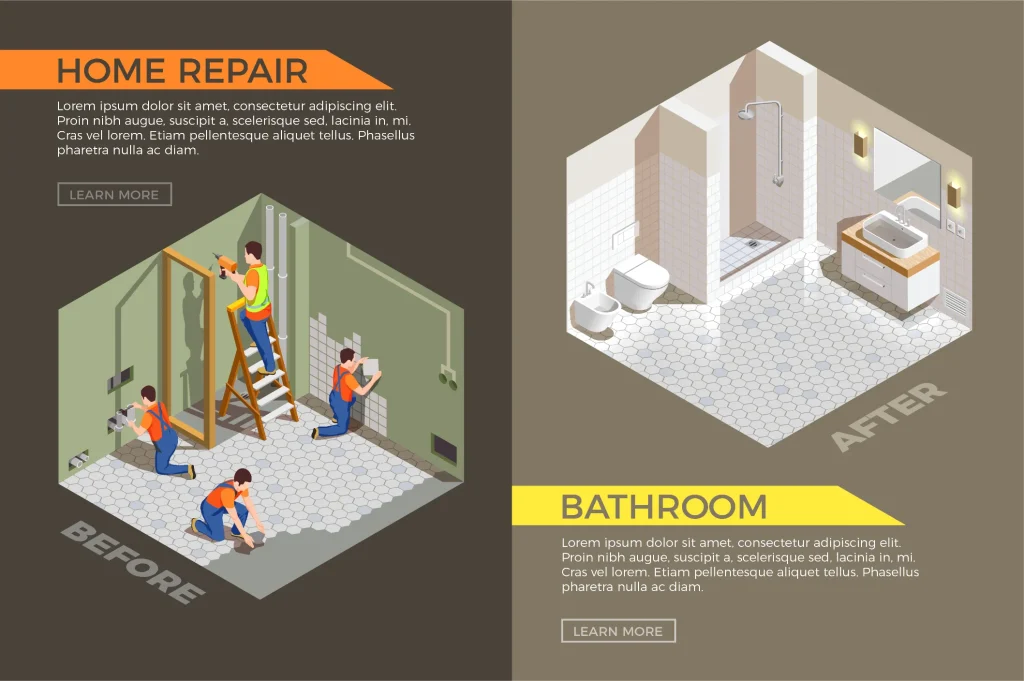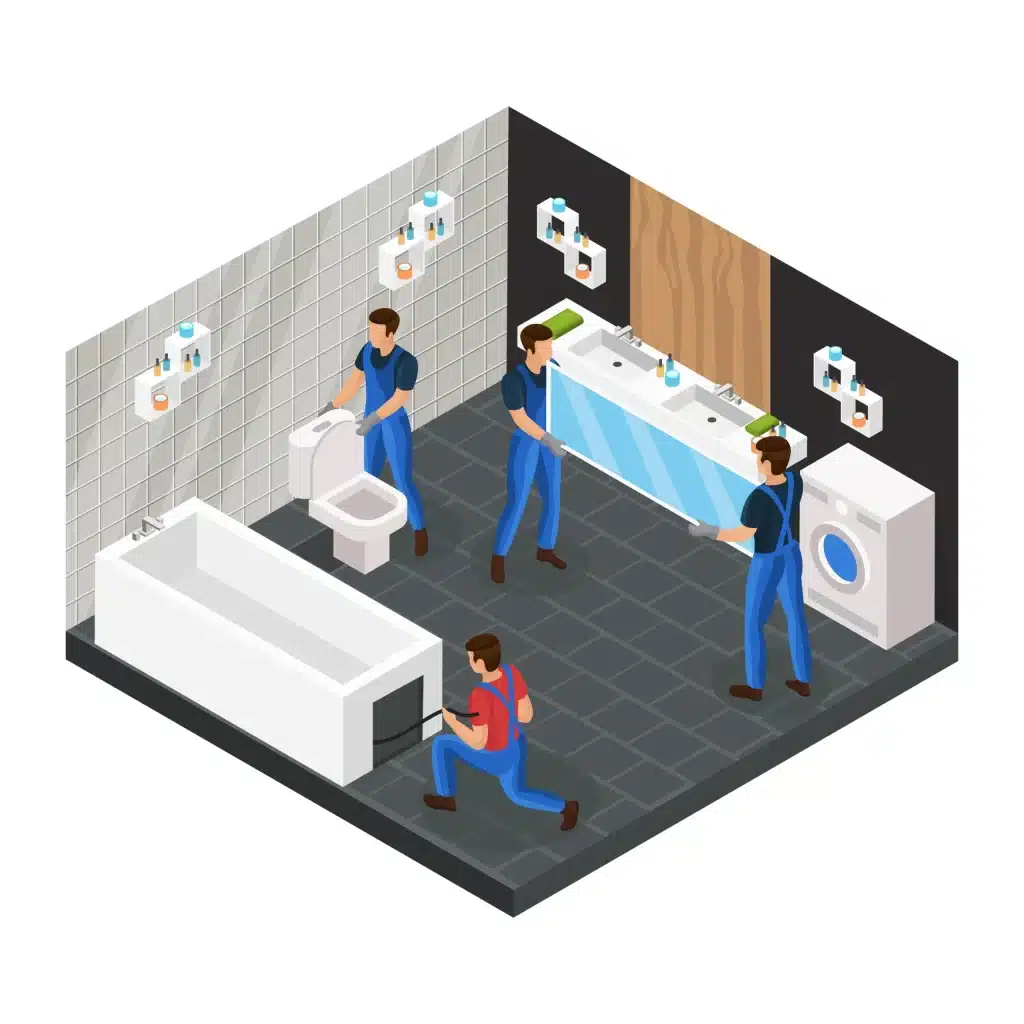The Bathroom Remodeling Steps Professionals Use - Sneak Peek Tips
The beginning to starting the bathroom remodeling process can seem daunting, especially for DIY bathroom remodelers who just started renovating. but with the right knowledge and planning, it can transform into a rewarding experience. Have you ever wondered how professionals approach bathroom renovations? Uncover their secrets and gain valuable insights to make your project a success. Get ready for a sneak peek into the world of bathroom remodeling, where we’ll reveal the steps we professionals use to achieve a stunning bathroom makeover.
Step 1: Planning Your Bathroom Remodel
Key Considerations Before Starting
How To Set A Realistic Budget
Setting a realistic budget for your renovation project can take a lot of research and effort, but you will soon realize the payoff is worth it, as the hidden costs such as accidents, broken wires, delays, and many, many more set in, do this by adding in a contingency fund into your budget; planning for the worst and hoping for the best is the motto when it comes to a bathroom remodeling investment, whether its DIY or not.
To set a realistic budget, start by getting quotes from contractors or researching average costs for similar projects in your area. Factor in the cost of materials, labor, permits, and unexpected expenses as discussed above. Prioritize your needs and wants to allocate funds. Lastly, Remember, it’s better to start small and upgrade later than to overspend and face financial stress.
Designing Your Dream Bathroom Layout Using Our Bathroom Remodeling Steps

Step 2: Installing New Bathroom Features
Demolitions of Old Bathroom Designs and Installing New Vanities
Mounting Bathroom Fixtures, Exhaust Fans, Plumbing and Electrical
Mounting bathroom fixtures is a crucial step that requires precision. Install faucets, showerheads, and other fixtures according to manufacturer instructions, ensuring they are watertight and securely fastened. Exhaust fans are essential for proper ventilation; place them strategically to optimize airflow and reduce moisture buildup. When dealing with plumbing and electrical work, it’s often best to hire professionals to handle the wiring and water supply connections. Ensure all connections are secure and comply with local building codes. Proper installation of these systems ensures your bathroom is safe and functional.

Step 3: Finishing Touches And Final Adjustments
Adding Decorative Elements like Towel Bars and Mirrors
Once the major installations are complete, it’s time to add those finishing touches that give your bathroom its personality and functionality. Start by installing decorative elements such as towel bars, mirrors, and shelves. These accessories not only enhance the visual appeal of your renovated bathroom but also provide practical storage solutions. Select pieces that complement your overall design scheme and place them strategically for maximum convenience and aesthetic impact. For example, position towel bars within easy reach of the shower or bathtub, and install a stylish mirror above the vanity to add depth and brightness to the space.
Focusing on Water Supply and Finalizing Plumbing
Ensuring a reliable water supply and properly functioning plumbing system is crucial for a fully operational bathroom. Conduct a thorough check to confirm that all faucets, showerheads, and plumbing connections are secure and leak-free. Address any issues immediately to prevent future problems. This is also the time to install water-saving fixtures, such as low-flow showerheads and faucets, which can help reduce water consumption and lower your utility bills. Don’t forget to test the water pressure and temperature to ensure everything is working perfectly.
Making Necessary Adjustments for a Functional Bathroom Such As Grab Bars
The final step in your bathroom remodel is to make any necessary adjustments to enhance safety and functionality. Install grab bars in the shower or near the toilet for added support, especially if you have elderly family members or plan to age in place. These bars provide extra stability and can prevent slips and falls. Additionally, ensure that all electrical work is completed and up to code, including the installation of GFCI outlets for safety. Once these adjustments are made, perform a final walkthrough to check that everything is in order and meets your expectations.
Summary: The Bathroom Remodeling Steps To Transform Your Bathroom
Many homeowners decide to remodel their bathroom for various reasons, such as outdated design, water damage, or simply to increase the resale value of their home. If you’re looking to remodel your bathroom, it’s important to follow these steps to ensure a successful bathroom remodel. Firstly, assess the current state of your bathroom and determine the cost of the remodel. Next, plan out the design and layout of your new bathroom, including new fixtures, lighting, and flooring. Then, begin the renovation process by removing the existing bathroom features such as the tub, shower enclosure, and bathroom walls. Lastly, install your new shower or tub, shower wall, lighting fixtures, and any other fixtures you’ll need to complete the remodel.
Whether you opt for a budget-friendly remodel or a more extravagant renovation, updating your bathroom can make a significant impact on your home’s overall appeal. From installing a new shower head to updating the baseboard and light switch, every detail counts when it comes to remodeling your bathroom. By following a step-by-step guide and carefully planning each

